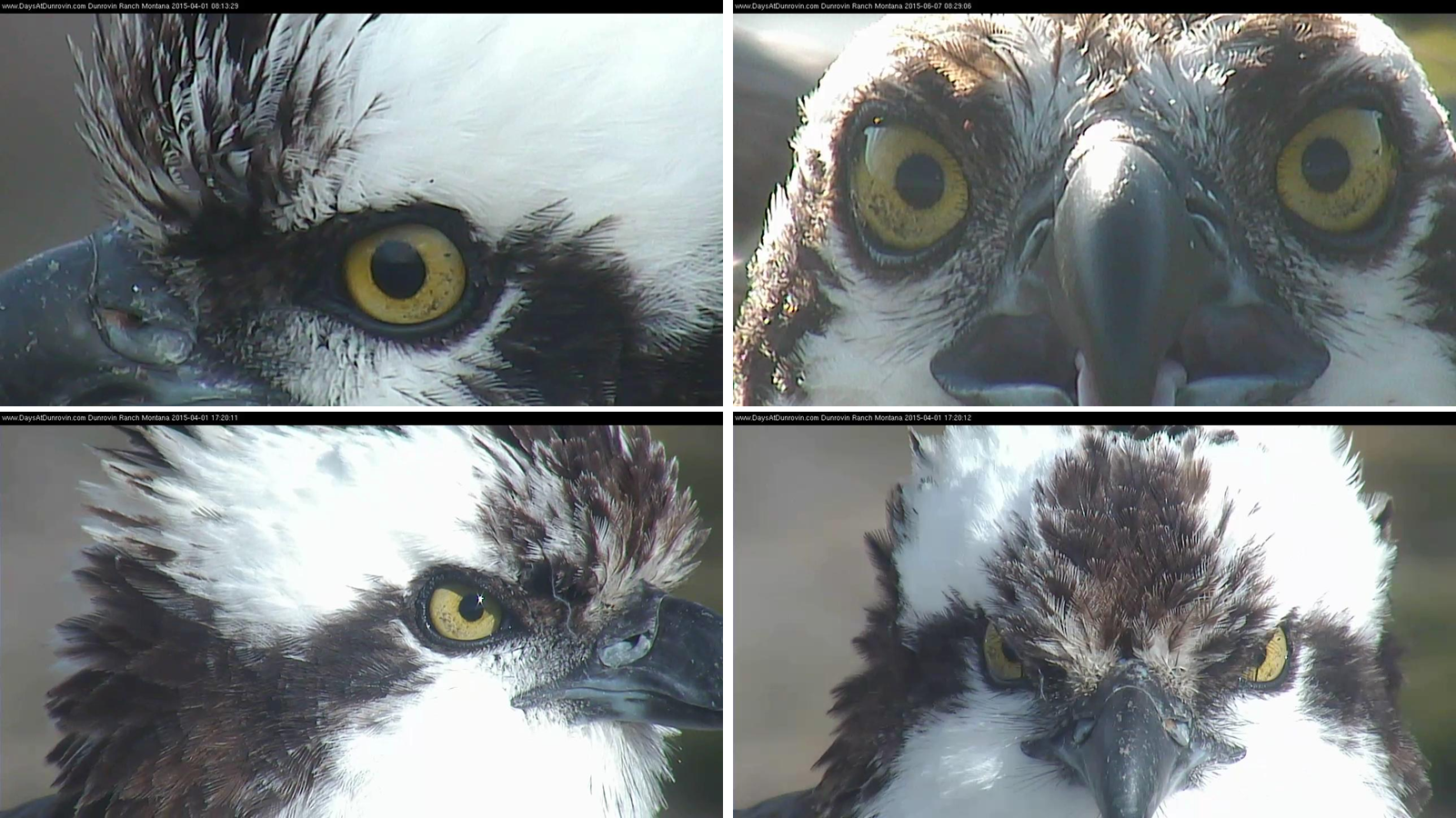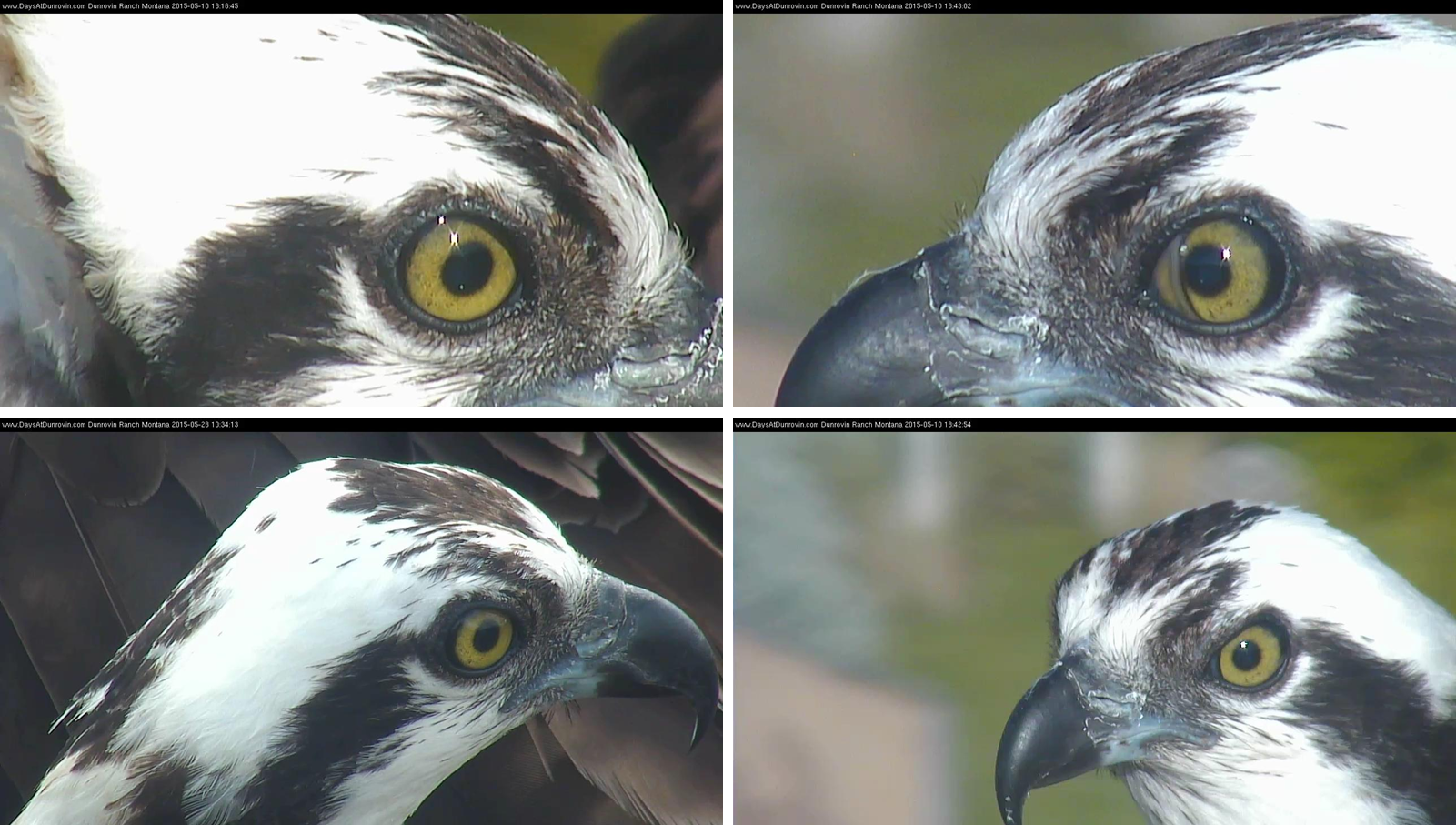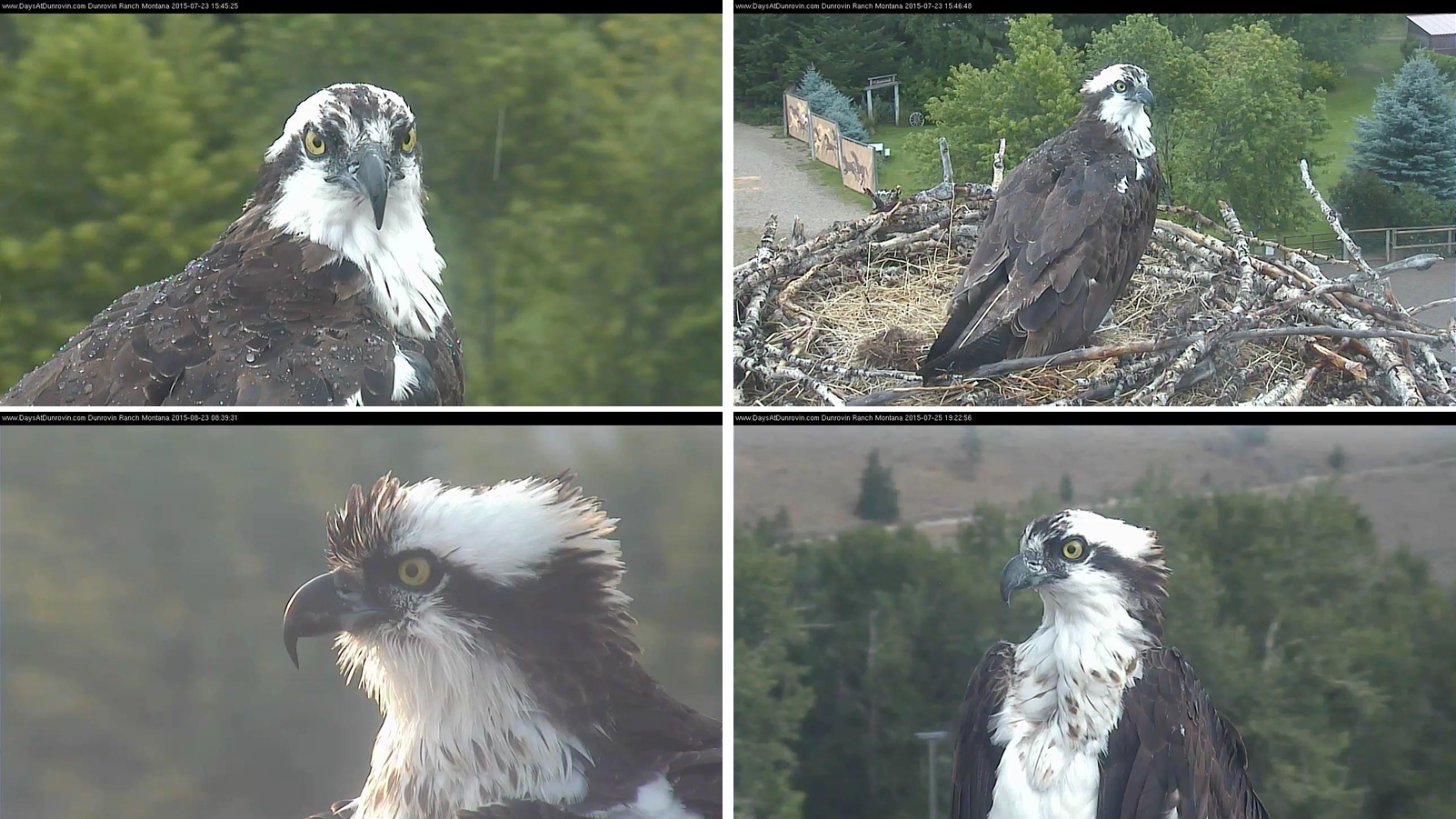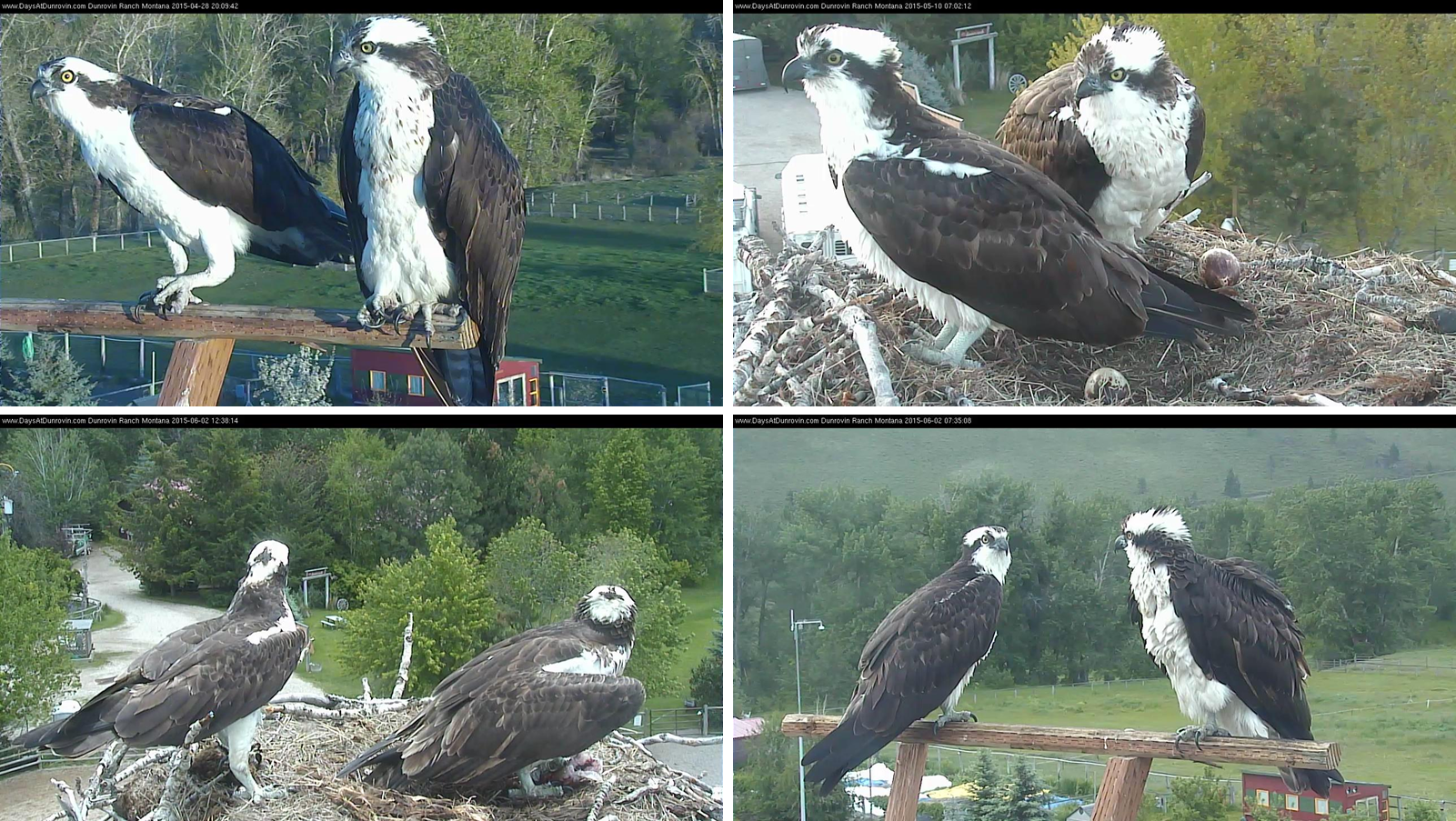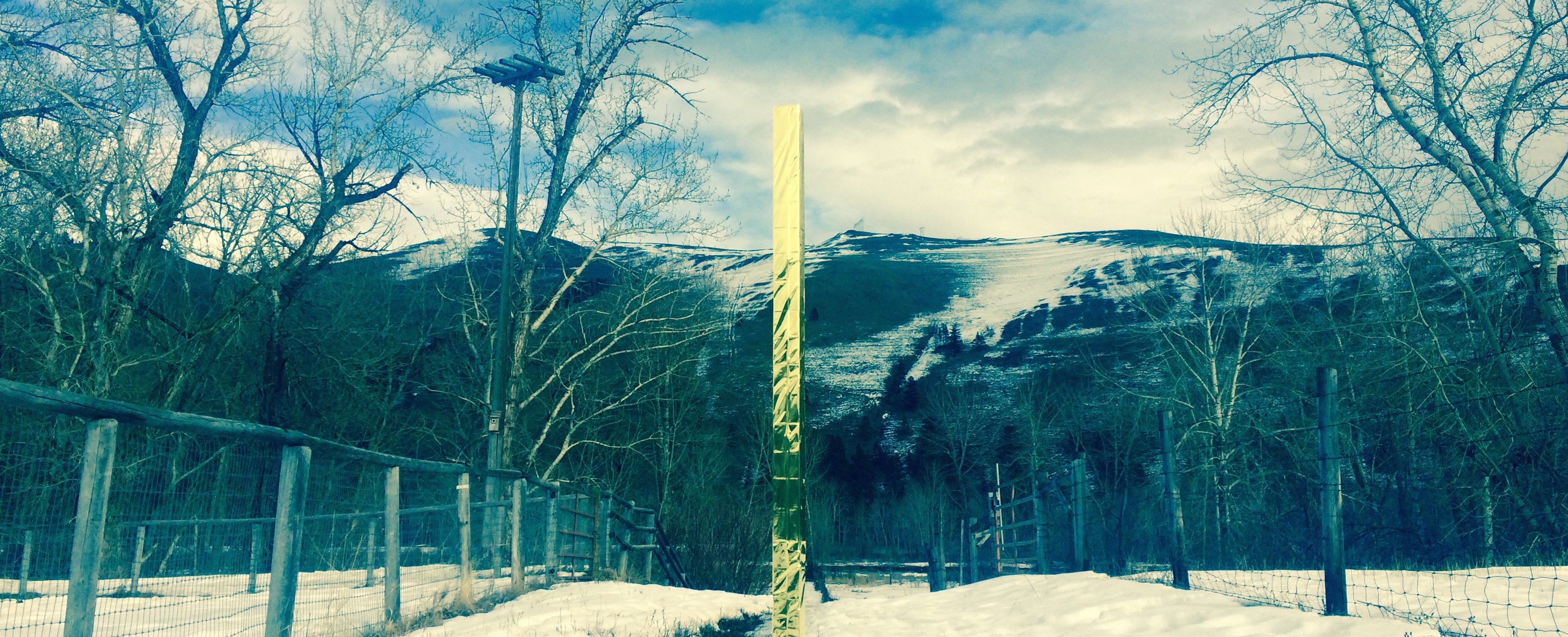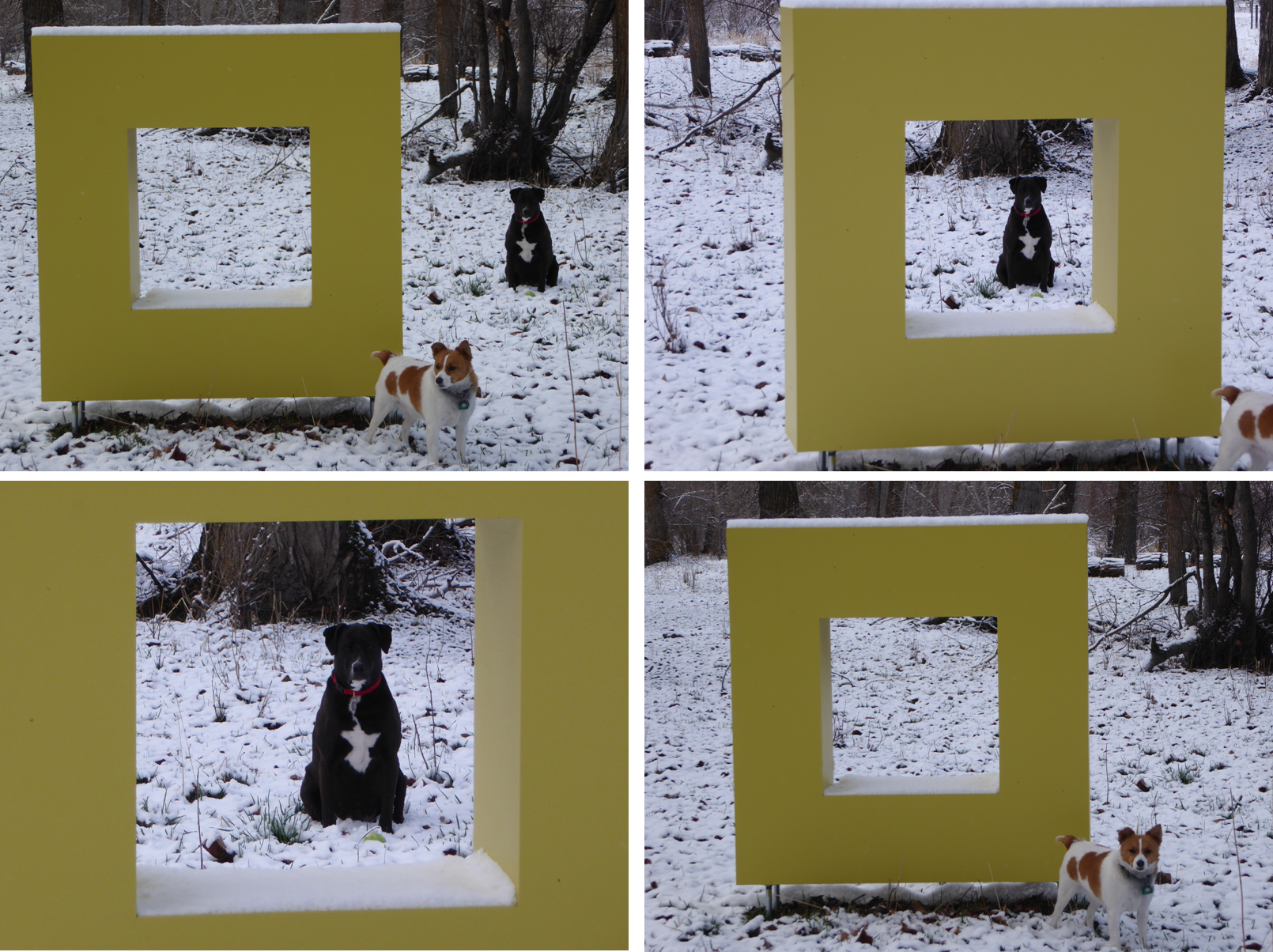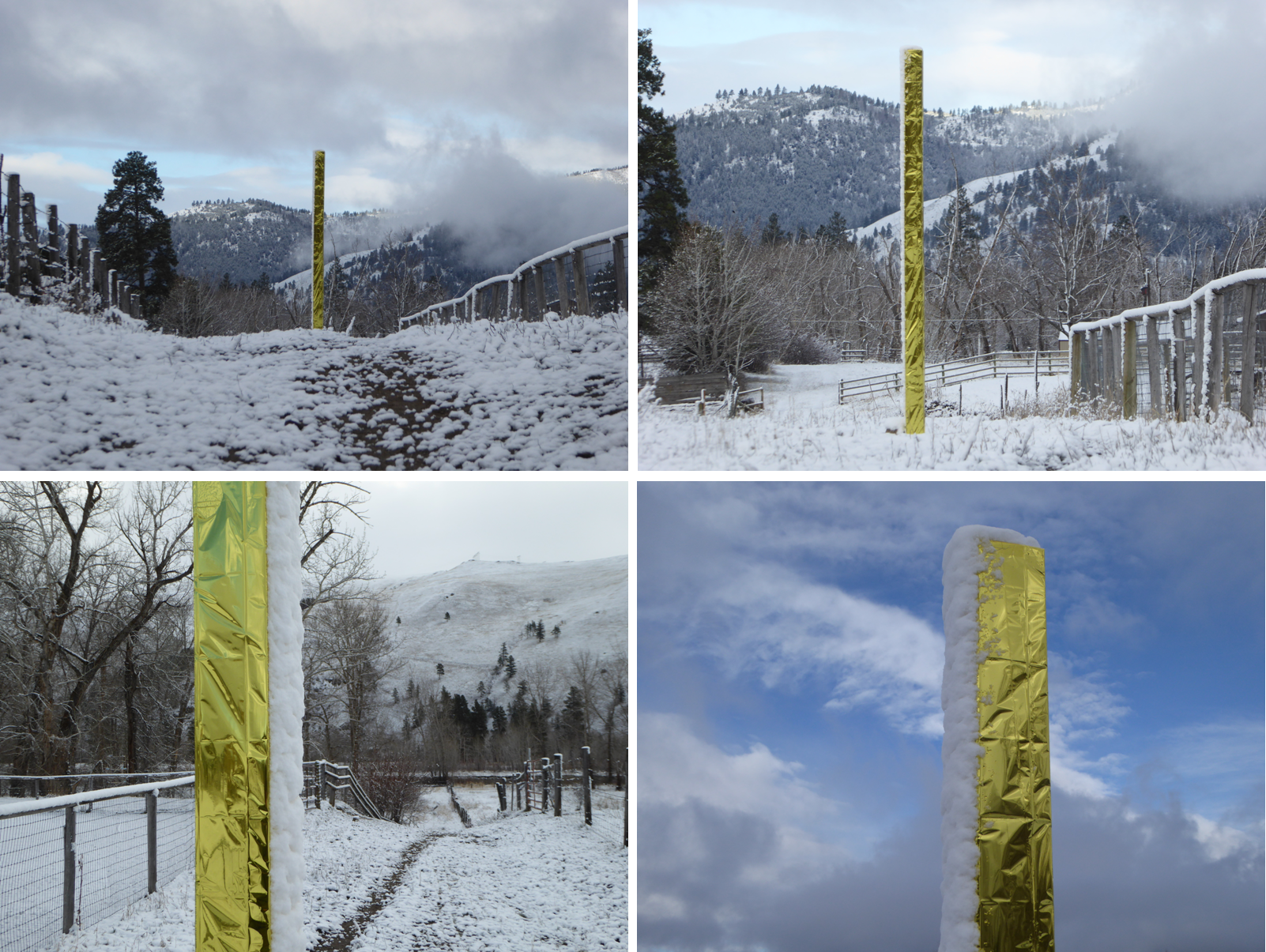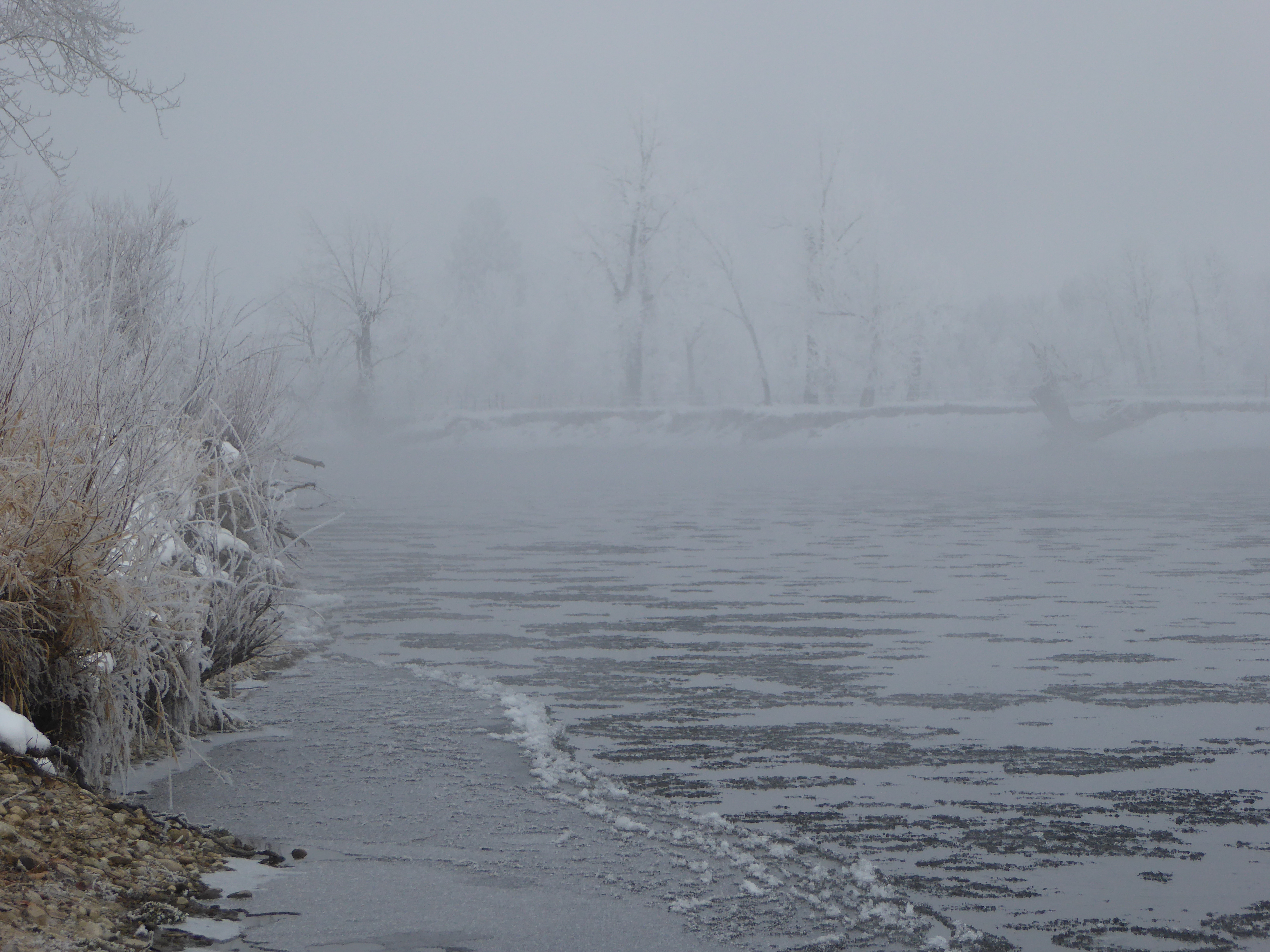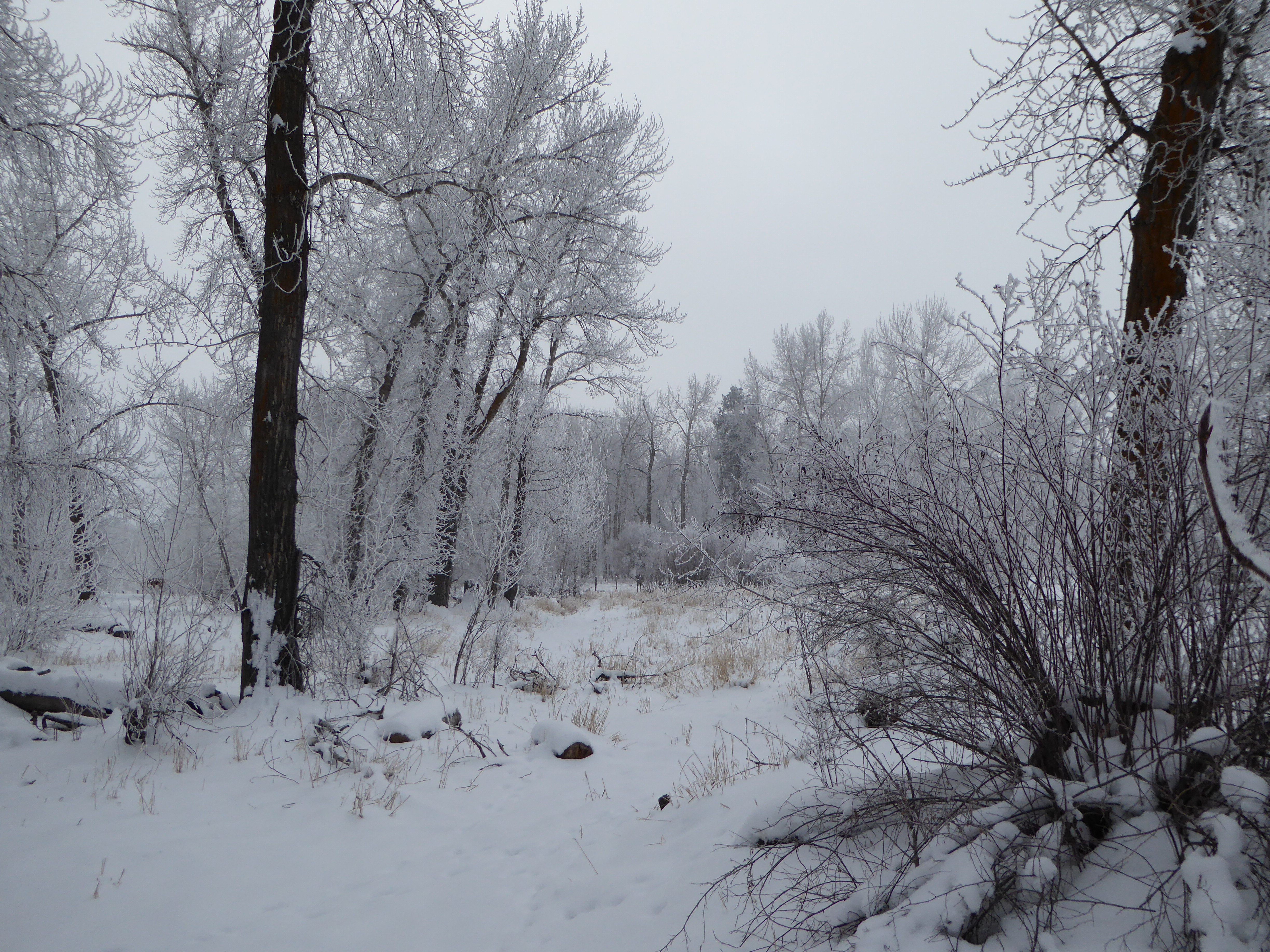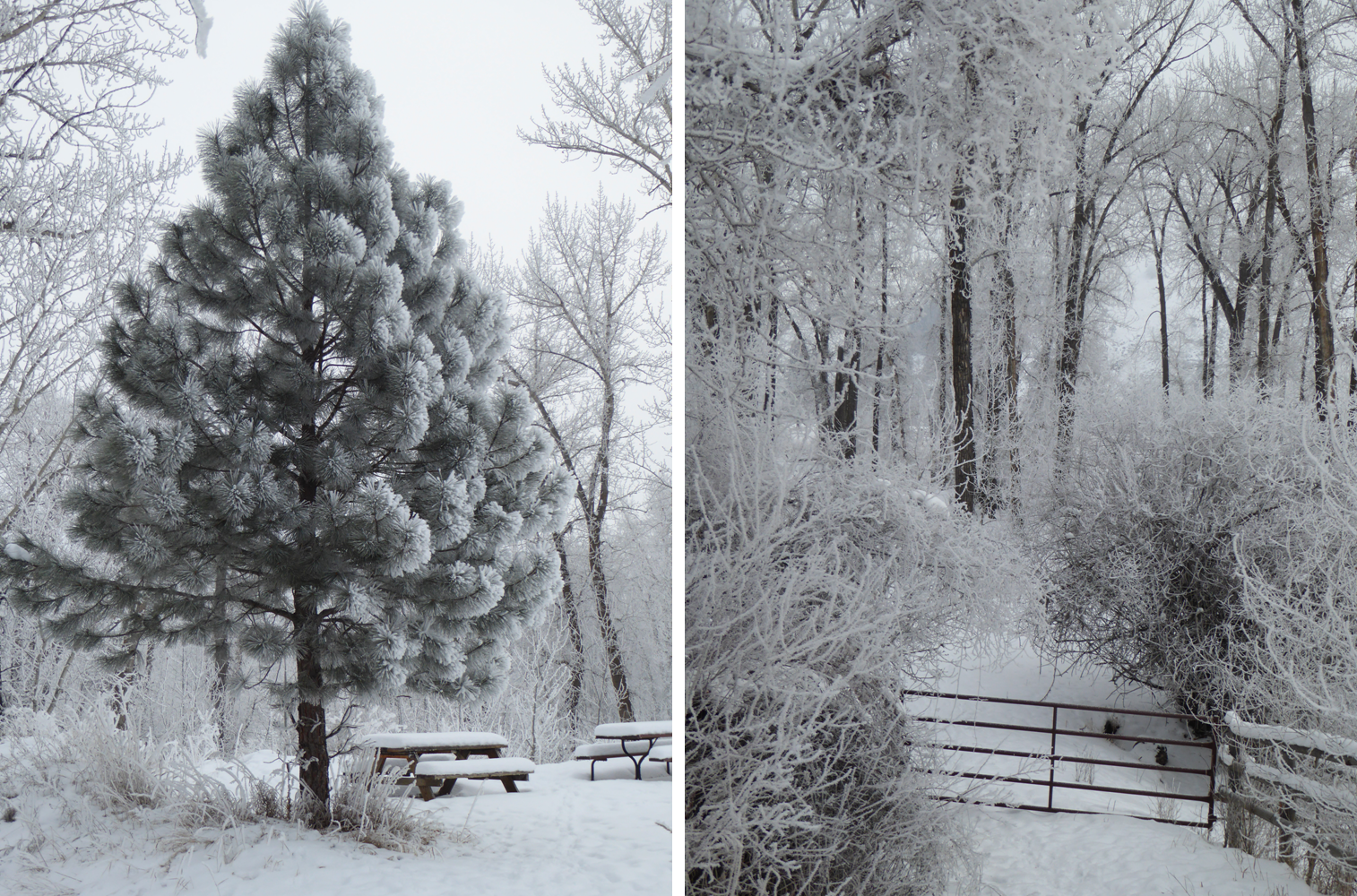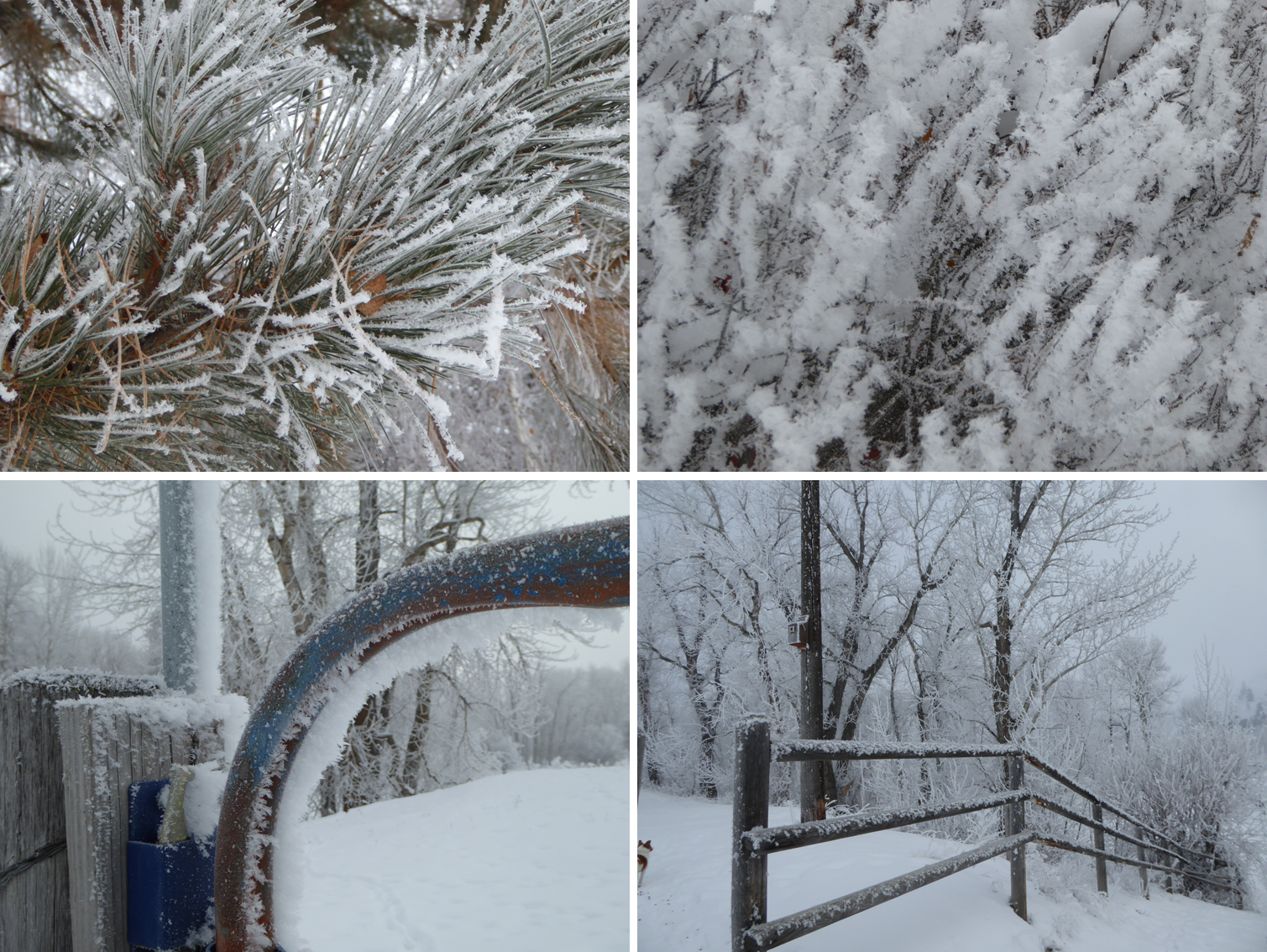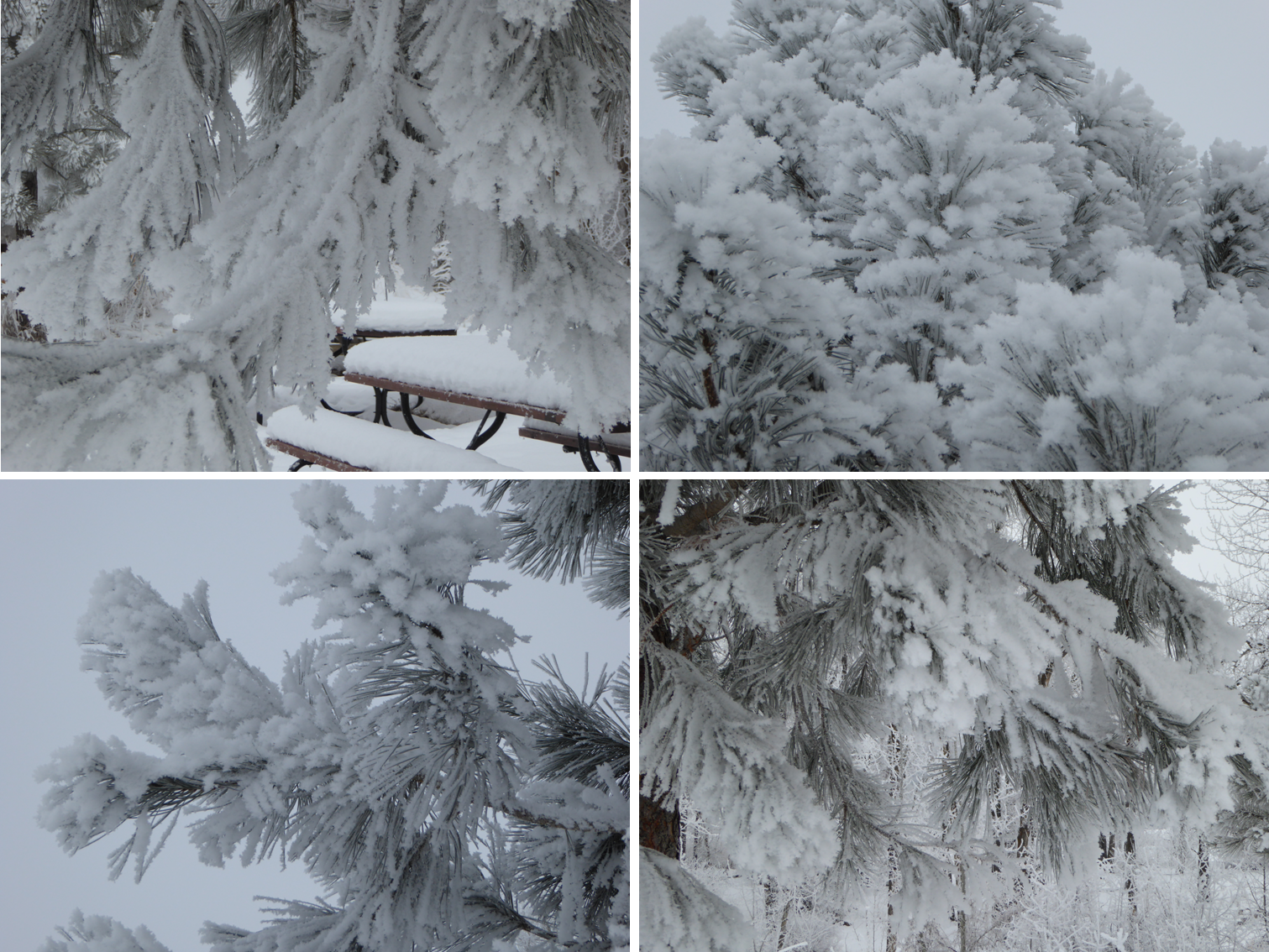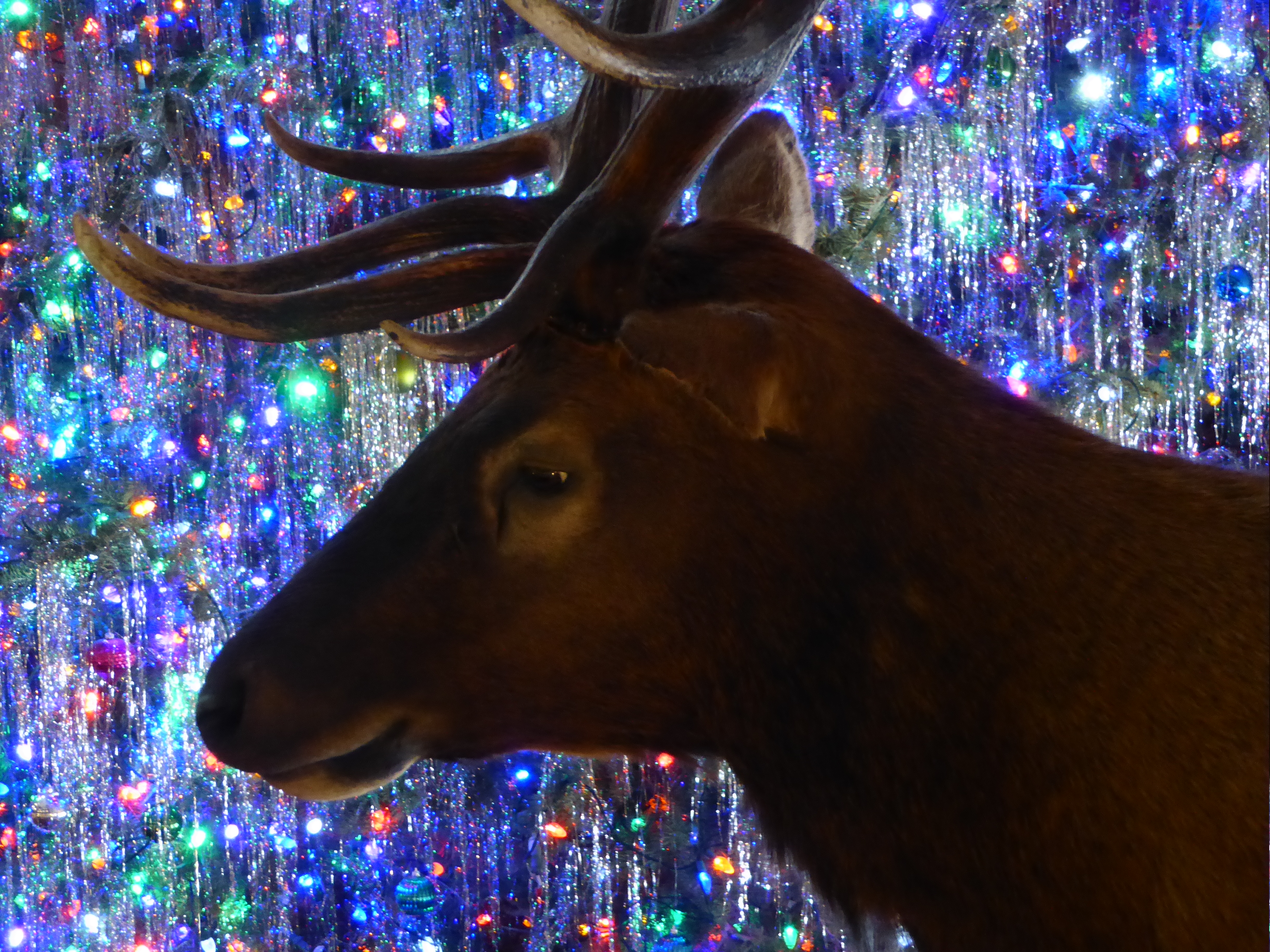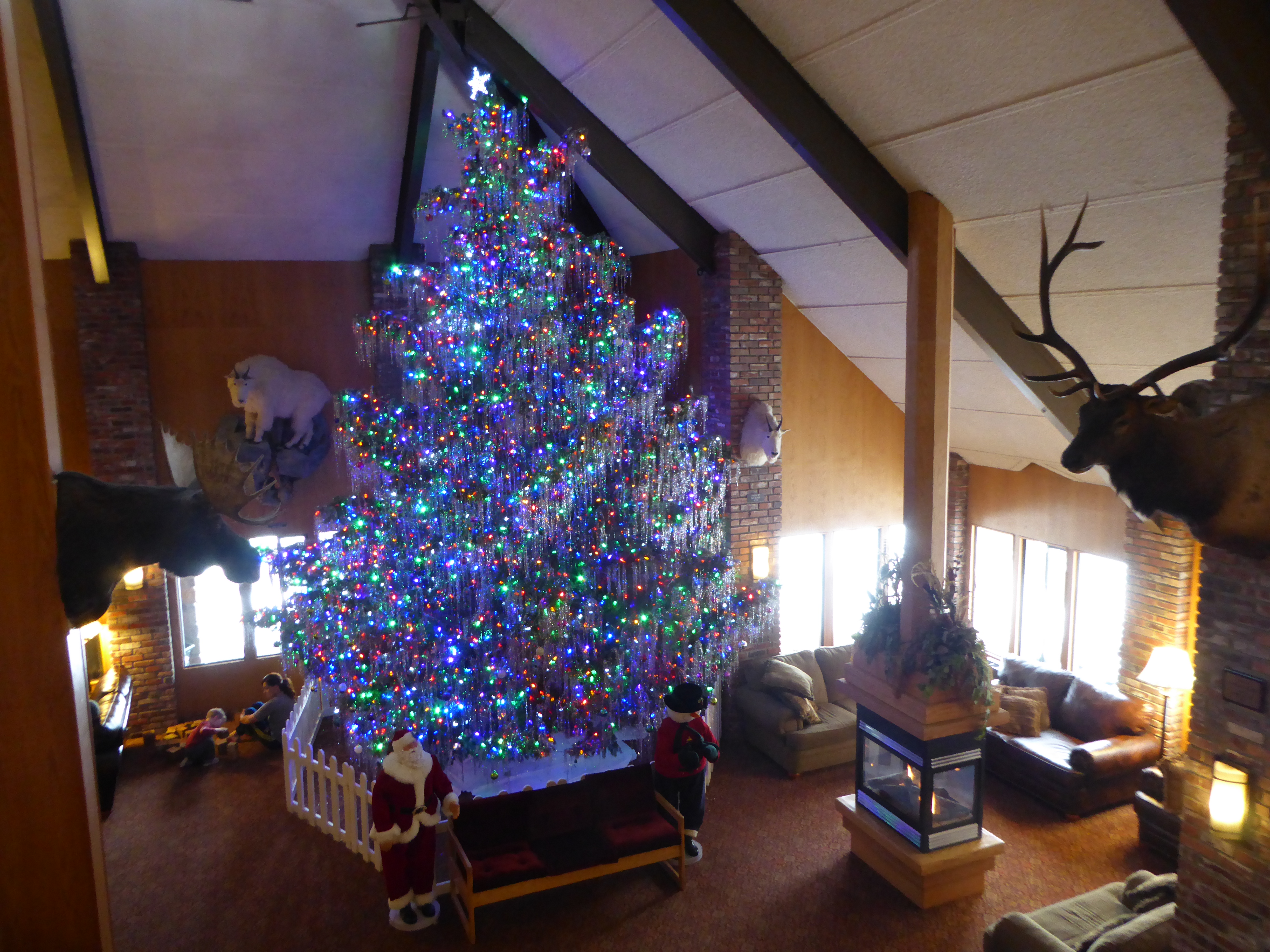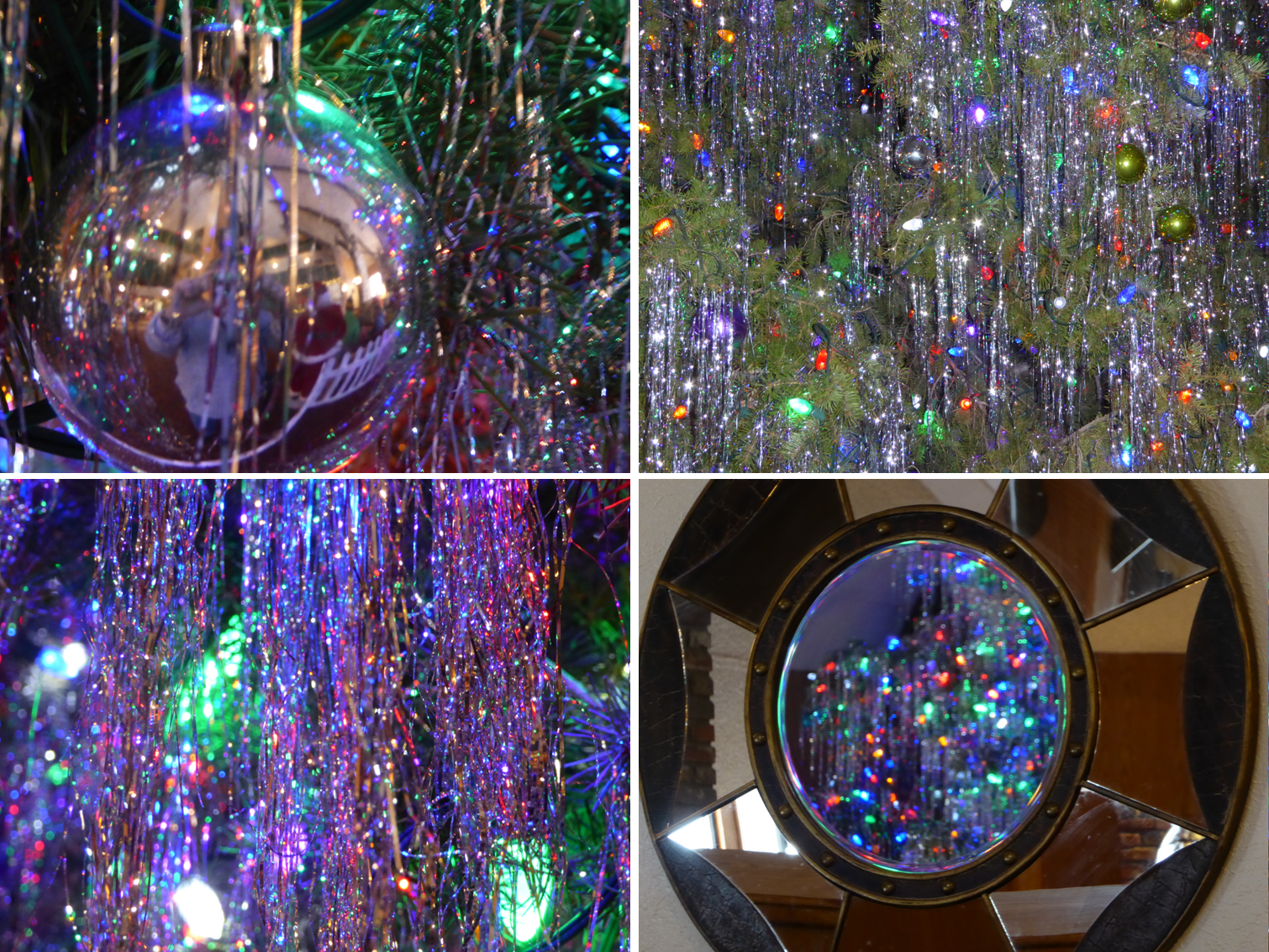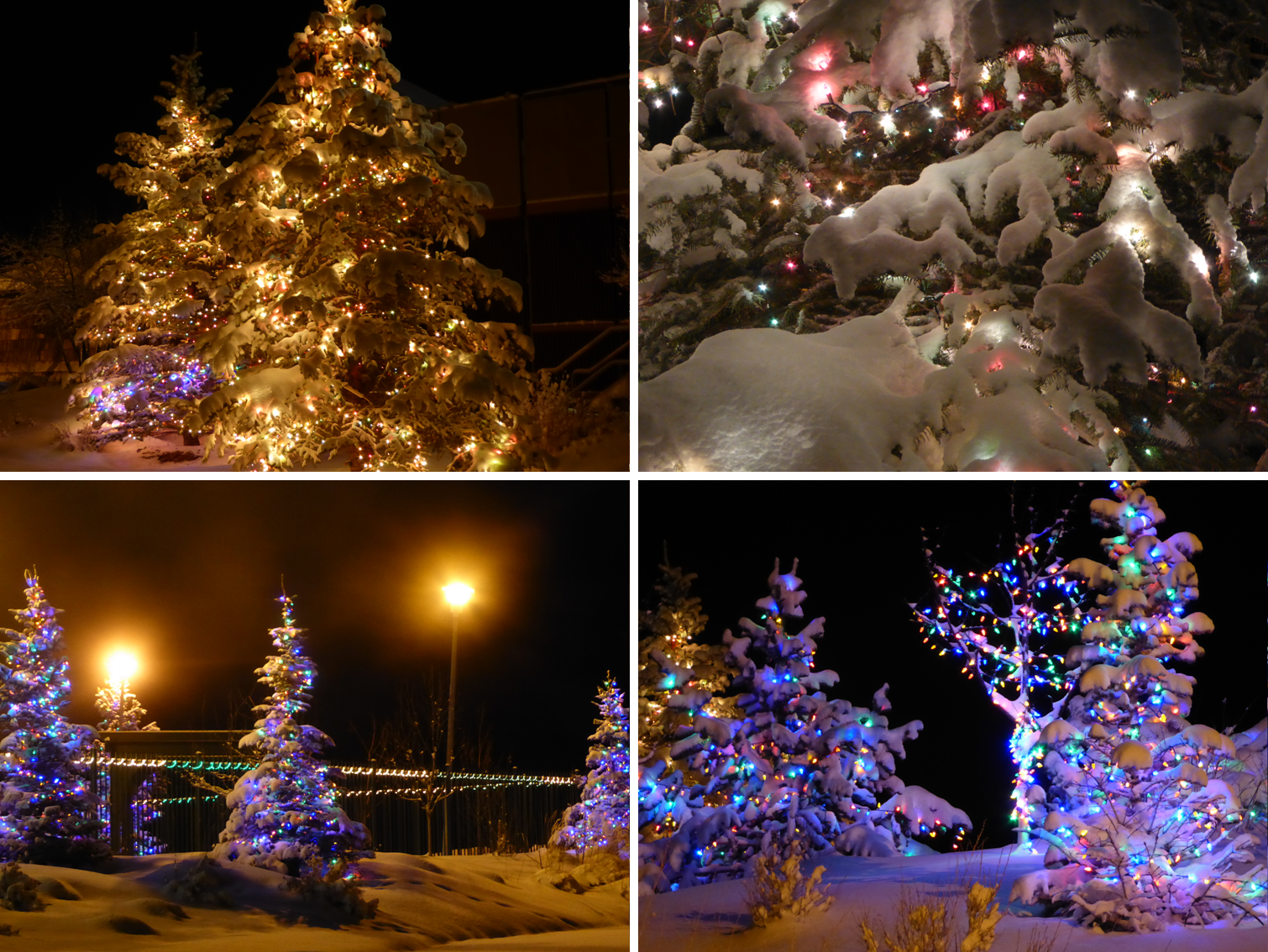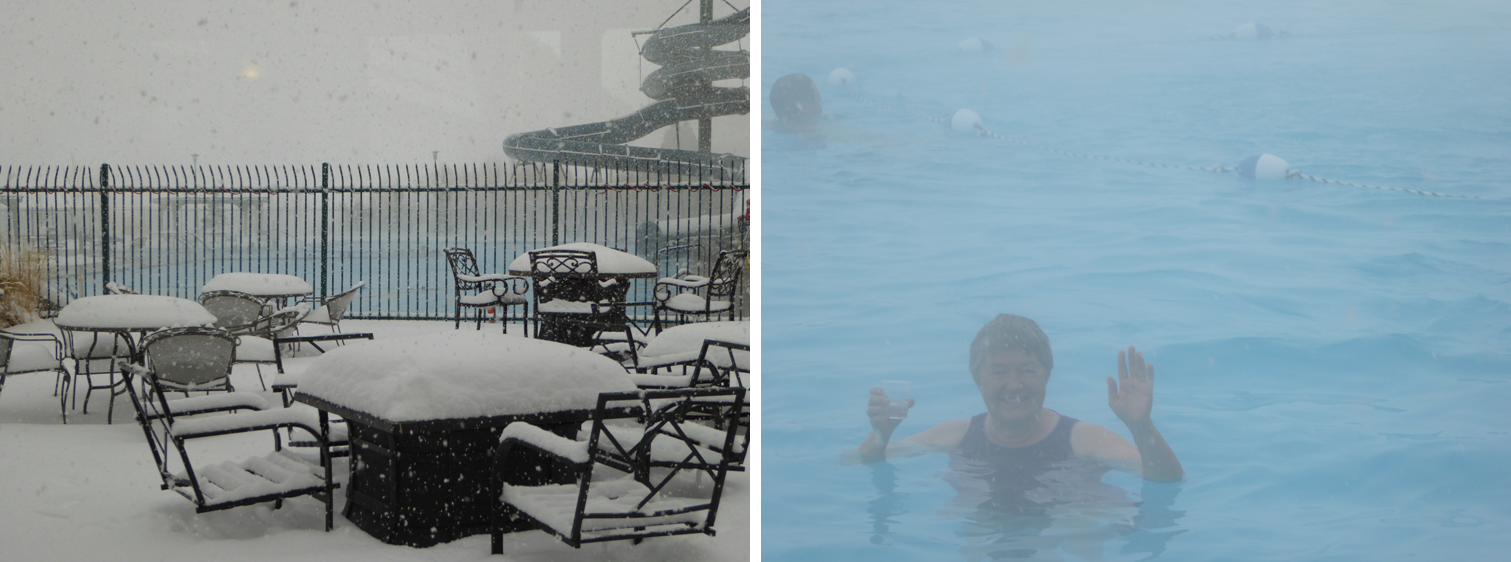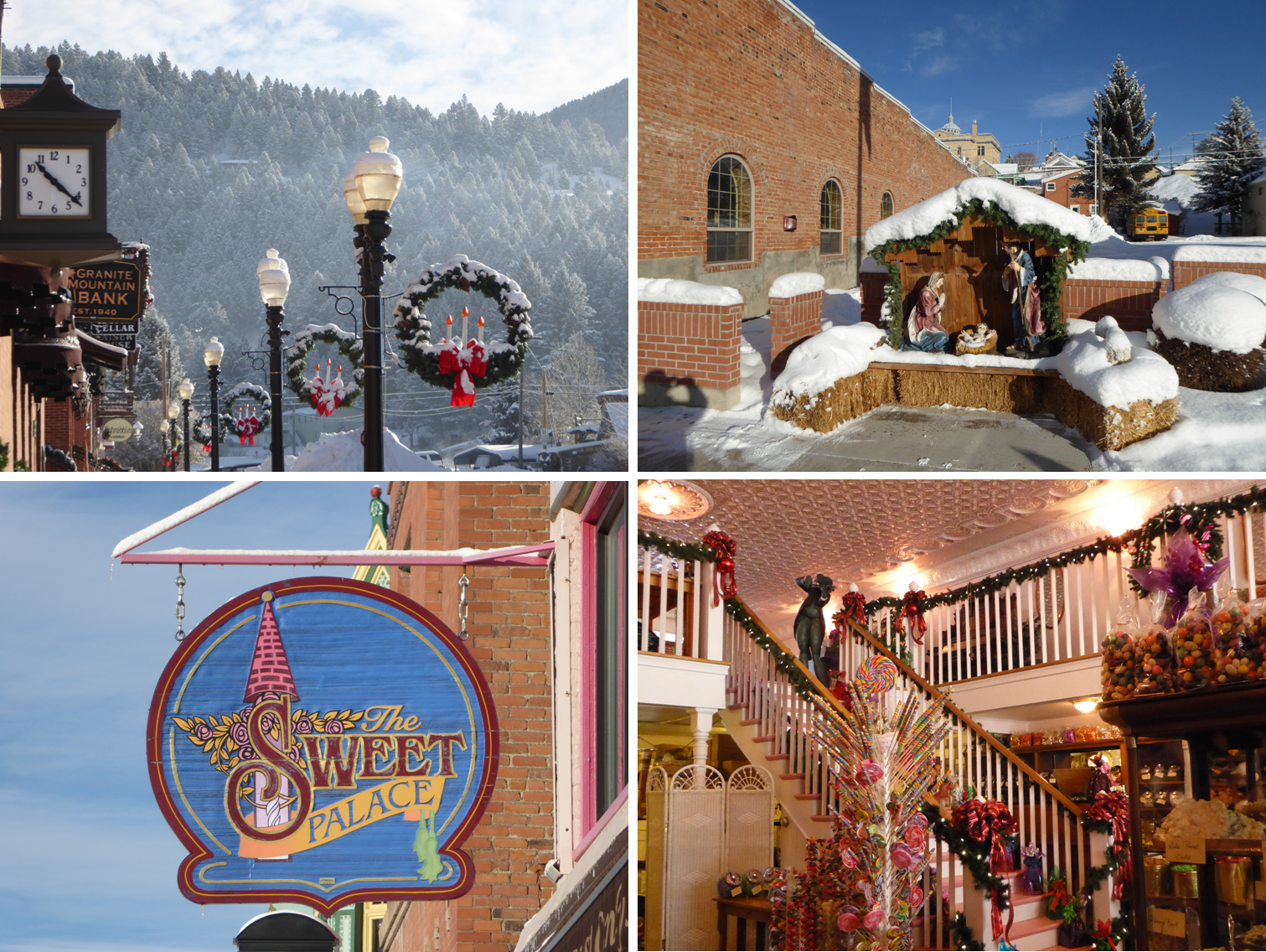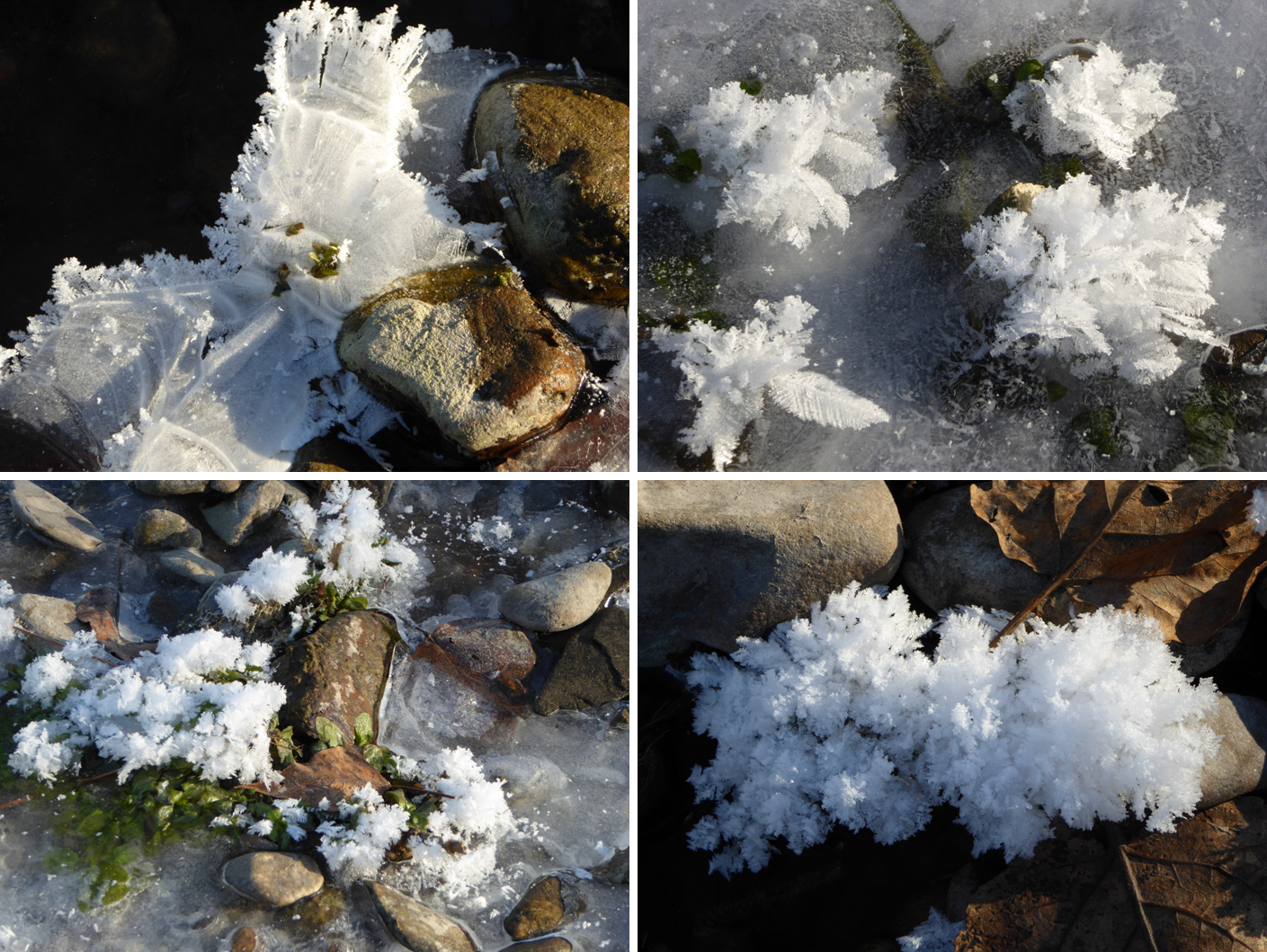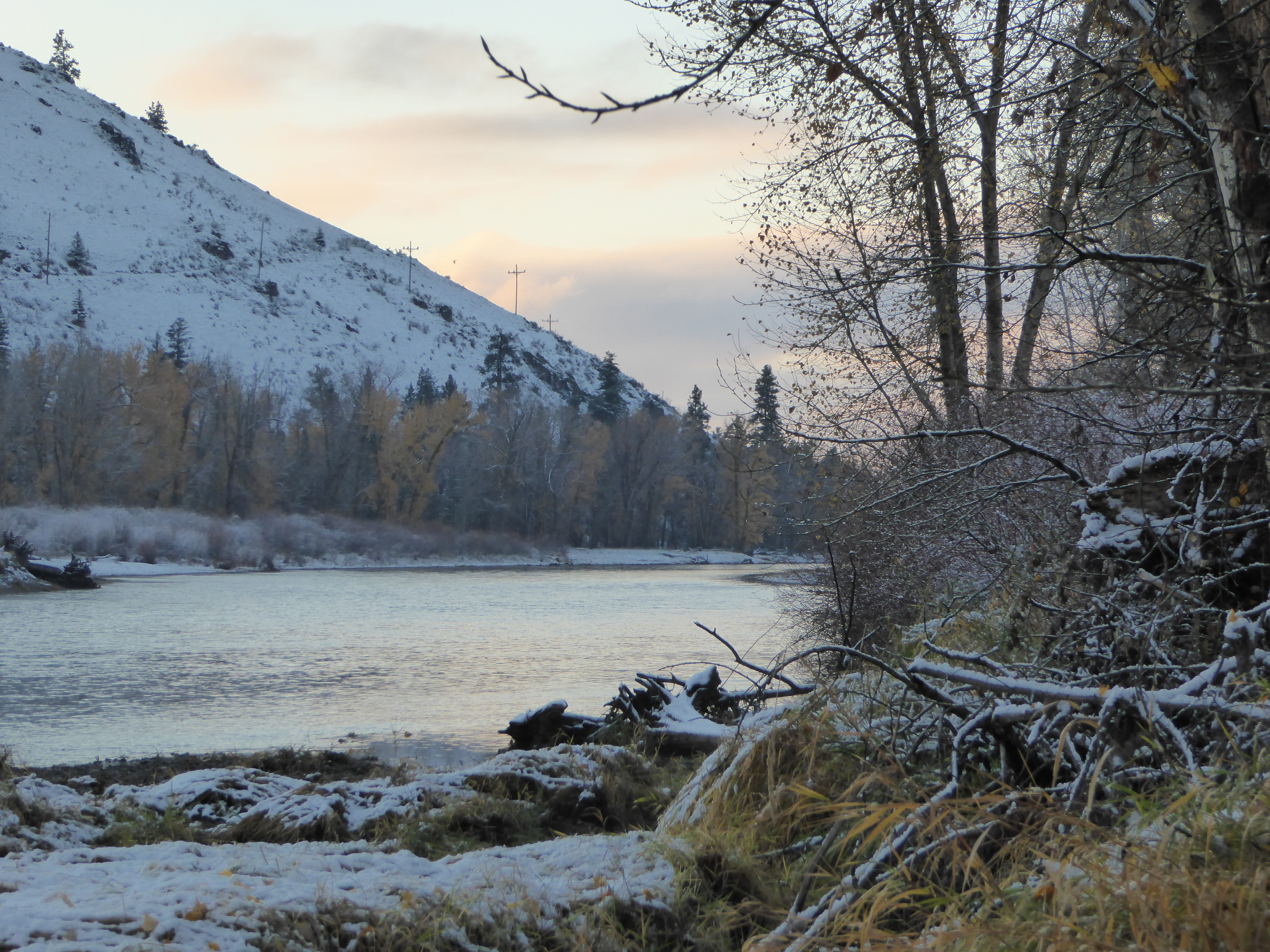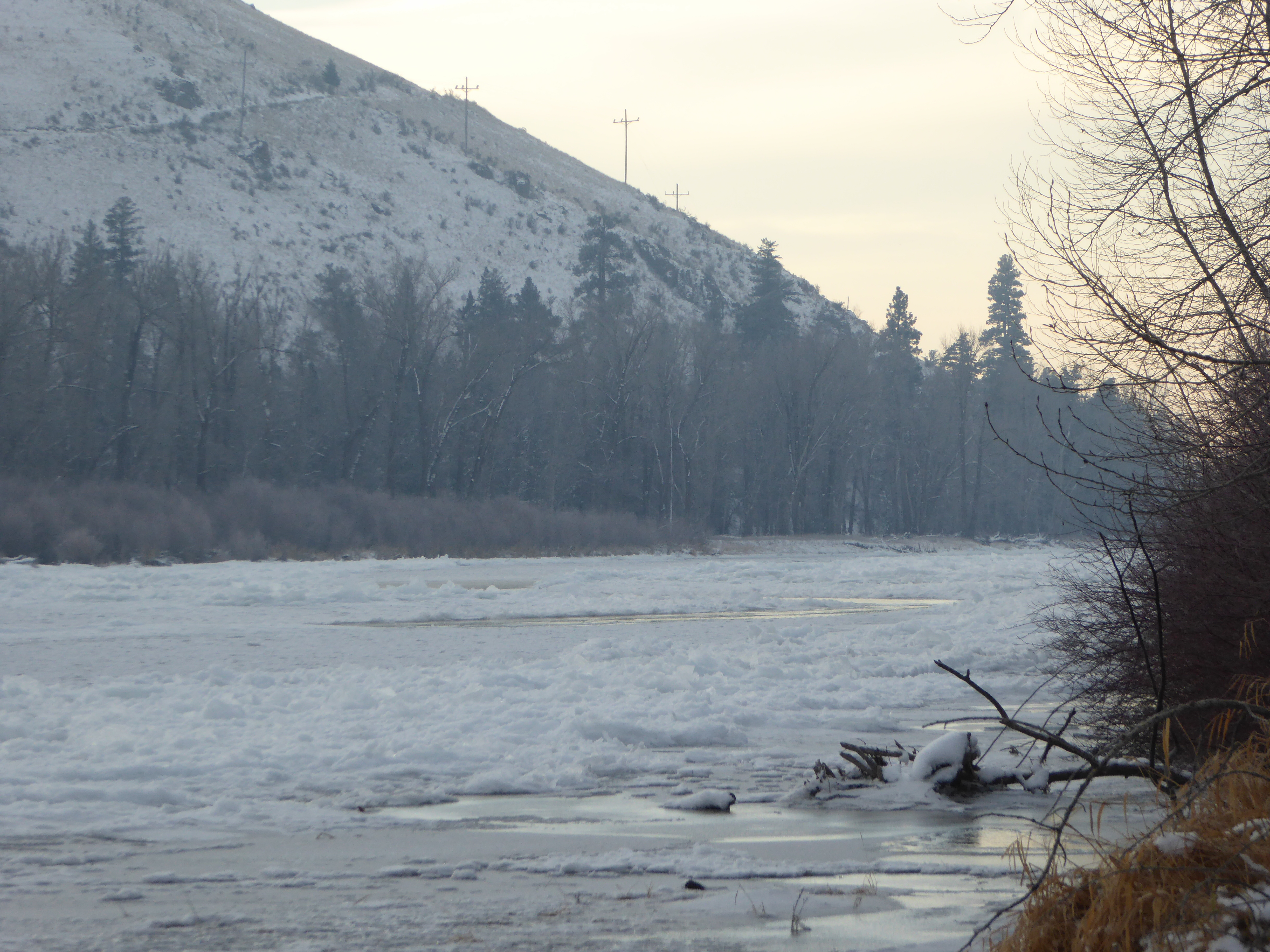Each year as the calendar arrives at the ides of March, all eyes at Dunrovin begin to turn upward for the first appearance of our most famous seasonal residents – the ospreys. Since Dunrovin came into existence, the ospreys of spring and summer have been a dominant feature. They command the skies and they fill the air with their boisterous chirps as they set up housekeeping in their enormous nest. Each year they return in heed of nature’s call to breed, care for their chicks, and fledge the next generation of ospreys.
It was not until 2011 when Dunrovin installed the web camera above the ospreys’ nest that we were able to distinguish individual birds. From the ground, most ospreys look very similar. There is little variation in their color patterns and unless an osprey has a wonky feather or other distinguishing feature, it is nearly impossible to tell them apart as they fly by. The web camera, however, allows us to look them right in the eyes – and it is the eyes that are their telling characteristic. Each bird has a unique set of spots or flecks in the iris of each of their eyes. By comparing the fleck patterns from year to year, we can distinguish the birds and verify that the same ospreys return each year.
Indeed, since 2011, the same ospreys, whom we lovingly named Ozzie and Harriet, did return. Then, in 2014, tragedy struck. Ozzie was killed by an eagle, and Harriet was left along to raise her surviving chicks. She valiantly stayed long after her normal departure date and successfully fledged her two chicks. In 2015, Harriet returned alone and spent a chaotic and dramatic summer finding and training a new mate, whom we have appreciatively named Hal – short for Hallelujah, Harriet has found a mate!
While Harriet did manage to lay two eggs in 2015, she was unable to adequately incubate them for lack of a proper mate who would supply her with food. Hal arrived on the scene a little too late to be of much help. However, the infertile eggs did serve as great “practice eggs” for him to learn how to properly sit them. It was by all measures an unsuccessful breeding year – unless Hal returns with Harriet and last summer’s learning translates into an successful breeding this year. In spite of the lack of chicks, it was, for all of us viewers, a very interesting year. Little did we all understand just how much learning goes into successful breeding. Nature provided Hal with the tools; but is was Harriet who showed him how to use them.
So now our eyes will be focused on the eyes of any osprey that lands on the Dunrovin nest. It is a popular nest among ospreys, as there is no another one for miles around and the fishing grounds are good. It is sure to be occupied. But by whom? Will Harriet have survived the winter? Will she return to the nest? Will Hal return as her mate? Will they successfully breed and raise their first chicks together. The eyes of the ospreys that take up residence will answer our first questions, while only the passing of summer will reveal the answer to our latter.
Here are some close up photos of Harriet’s eyes. Notice the thick field of flecks in the lower, outside quadrant of each eye. In her left eye, she also has a rather large fleck at about 2 o’clock.
Now contrast Harriet’s eyes with Hal’s. His eyes have far fewer flecks. In fact, they are a only three significant flecks in his left eye and only two prominent flecks in his right eye.
As soon as an osprey lands this year, which should be any day now, we will swing the web camera around to try to get a clear close up photo of its eyes. And, of course, our hopes are that we will ultimately see the same four eyes displayed in the photos above.
Naturally, there are other, less definitive, signs of each bird which can be used to tell Harriet and Hal apart. Harriet’s dark forehead feathers come down almost to her beak, while Hal has more white feathers immediately above his beak. Harriet is larger than Hal, as most females are larger than males.
Harriet has a more distinct “necklace” of darker feather around her chest. Hal has longer and slimmer legs. Harriet, on the right in all of the photos below, has slightly more color variation in the feather on her back.
Here’s hoping that we soon greet these two magnificent birds back to Dunrovin for a successful year that produces chicks and keeps us in awe the entire summer.

